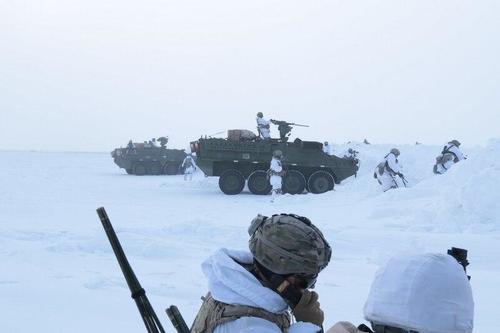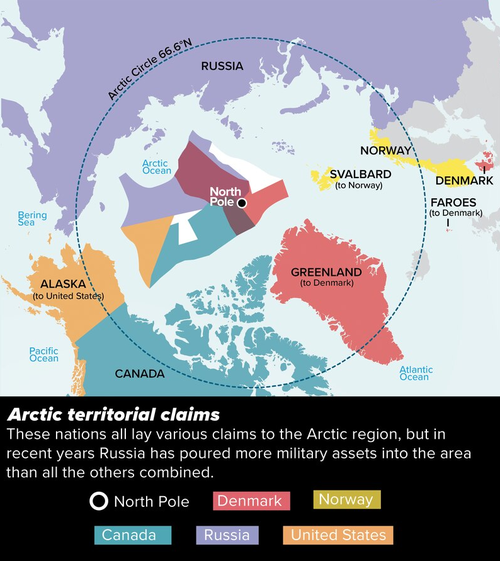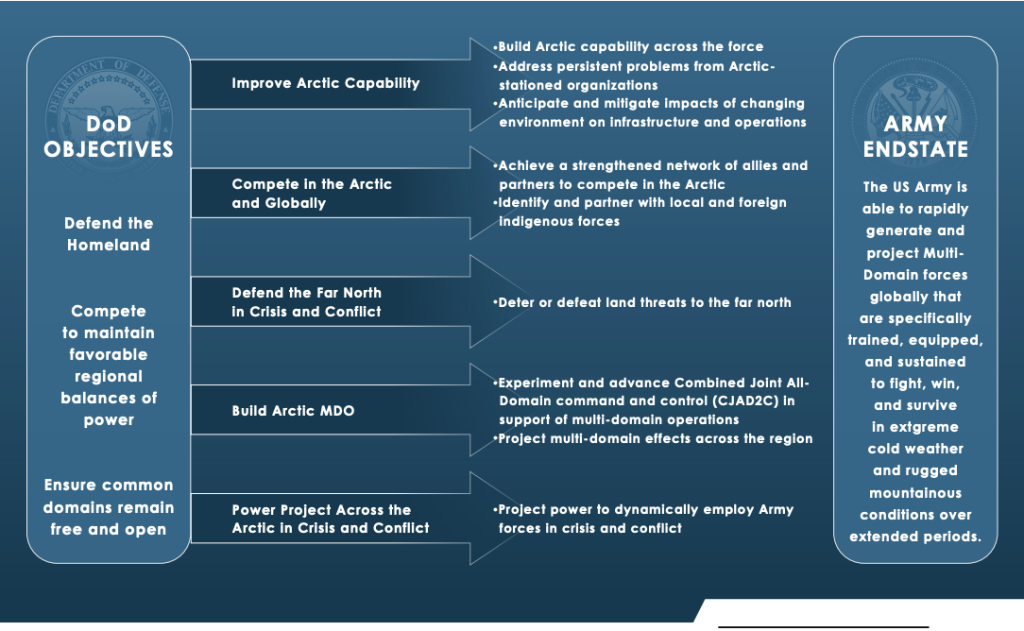Biden’s Department Of Defense Plans For A War In The Artic With Russia and China, Publishes New Plan For “Arctic Dominance”

Last week the US Army released a new strategic policy document entitled Regaining Arctic Dominance, an exhaustive 48-page work with valuable background information and striking graphics. Because of its length an attempt to summarize it with the accuracy and comprehensiveness would be a work of several pages itself. Instead, some of the more significant background data and other key components of the document will be listed. Regarding what the Pentagon refers to as the Far North, NATO as the High North and journalists as the top of the world, the following facts are relevant and excerpted from the Army study…
“The Arctic has the potential to become a contested space where United States’ great power rivals, Russia and China, seek to use military and economic power to gain and maintain access to the region at the expense of US interests. US National Security Strategy highlights the Arctic as a corridor for expanded strategic great power competition between two regions – the Indo-Pacific and Europe.”

The Arctic is where three of the US’s regional, geographic military commands – Northern Command, European Command (which is to say NATO as well) and Indo-Pacific Command – converge.
There are five Arctic littoral states: NATO members the US, Canada, Denmark and Norway, and Russia. The new strategy states rather bluntly that “The Army needs to generate forces able to compete effectively by, with, and through allies and partners, to pose dilemmas to adversaries as they seek to gain access to and compete in the region.” That means Russia and China, who are described not as partners, not even as rivals, but as adversaries.
The new Army policy identifies four arenas of rivalry and potential conflict between the US and its NATO allies and Russia and China: military developments, energy and minerals, transportation and food security.
The above division of allies and adversaries, the second repeatedly described by NATO as authoritarian enemies of the rules-based international order, is further delineated in the Army paper as follows:
While most Arctic nations are US allies, America’s great power competitors – Russia and China – have developed Arctic strategies with geopolitical goals contrary to US interests. Russia seeks to consolidate sovereign claims and control access to the region. China aims to gain access to Arctic resources and sea routes to secure and bolster its military, economic, and scientific rise.
Document
In the military category, “The Arctic is essential to Russia’s military power.” Indeed it is, as even the US Army is compelled to concede that “As the country with the largest amount of land above the Arctic Circle, Russia’s first priority is defending its historic right to rule over the Far North, securing its territorial interests against those of NATO-aligned states.”
In 1949 no one in Washington or Brussels foresaw, at any rate foretold, that the newly-founded North Atlantic Treaty Organization would evolve into a North Arctic Treaty Organization. But sixty years later NATO acknowledged just that.
Regarding the American military’s concern with energy competition in the Arctic, the document states:
75% of Russia’s oil and 95% of its natural gas reserves are located in the North. The Arctic accounts for nearly 20% of Russia’s DP, 22% of its exports, and more than 10% of all investment in Russia.
Document
And in general:
According to most estimates, the Arctic is home to 13% of the world’s oil, or 90 billion barrels, as well as 30% of the world’s natural gas, an estimated 47 trillion cubic meters. Additionally, the Arctic has vast deposits of base metals (aluminum, copper, iron, nickel and tin), precious metals (gold, platinum, and silver), precious stones (diamonds), other minerals (apatite, graphite, and gypsum) as well as uranium. Perhaps most importantly to digital societies around the world, the Arctic is also a source of rare earth metals (dysprosium, neodymium, and praseodymium). These metals allow the miniaturization of components for aircraft engines and advanced weapons as well as televisions, smart phones, laptops, cars, and cancer treatment drugs.
Document
That should clearly establish the rationale for the Scramble for the Arctic.

In a remarkable concession to the truth which will certainly never get into press reviews and academic discussions of it, the document concedes that “Russia’s efforts to reconstitute its military posture in the Arctic are primarily for territorial defense purposes and protection of Russia’s second-strike capabilities.”
That is, in both cases for purposes of defense. Second-strike options are primarily – one hopes entirely – for deterrent purposes.
For decades the US and Britain have conducted submarine exercises under the polar ice cap, arguably the last redoubt for Russian nuclear submarines, themselves the last line of second-strike deterrent protection. The Pentagon’s and NATO’s expansion into the Arctic is in part an effort to deprive Russia of any potential of deterring or responding to a joint U.S.-NATO first strike, conventional or nuclear.
To the overall purpose of regaining and maintaining military dominance in the Arctic, “The Army will generate Arctic-capable forces ready to compete and win in extended operations in extreme cold weather and high-altitude environments.”
In a section titled Project Power Across the Arctic, the document states, “The Army will improve the materiel readiness of Arctic-capable units to conduct extended operations in the region,” in part with ongoing war games like Arctic Warrior and Arctic Edge conducted with NATO allies.
The Arctic may become the decisive battleground of the 21st century. The stakes couldn’t be higher.

The DOD Clearly is planning to send the Army to fight in the Arctic and other endless wars abroad.



Pingback: Russia Pushes New Trade Route Through The Arctic Sea Due To Suez Blockage. Is This WHy Biden Has A War Plan For The Artic? | Not A News Network
Pingback: Biden plays first round of golf as president, Meanwhile The Amount Of Unaccompanied Children Is Doubling Every Month And The World Is On The Brink Of War. | Not A News Network